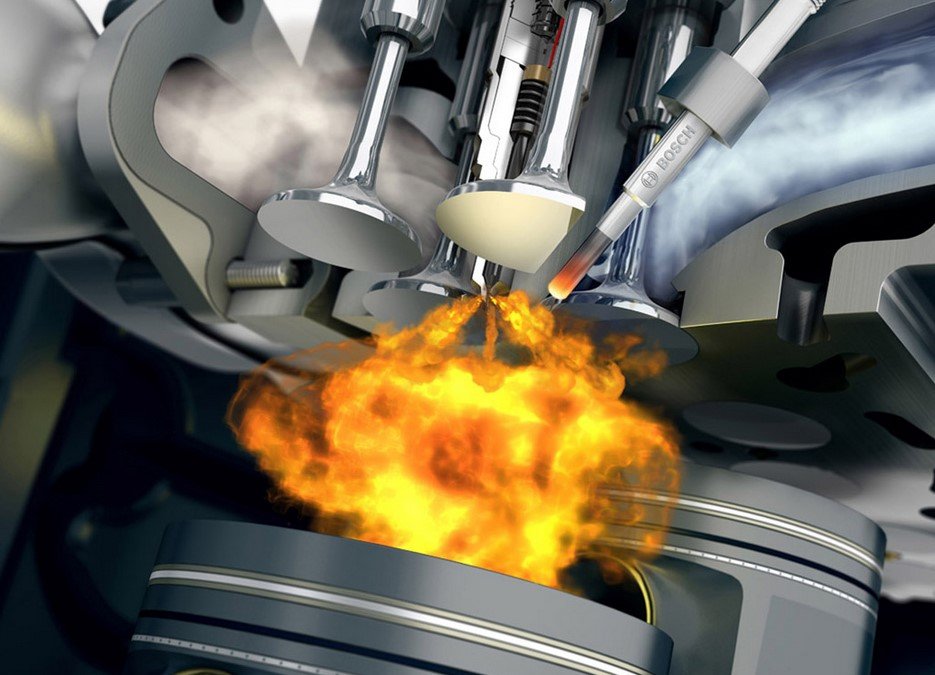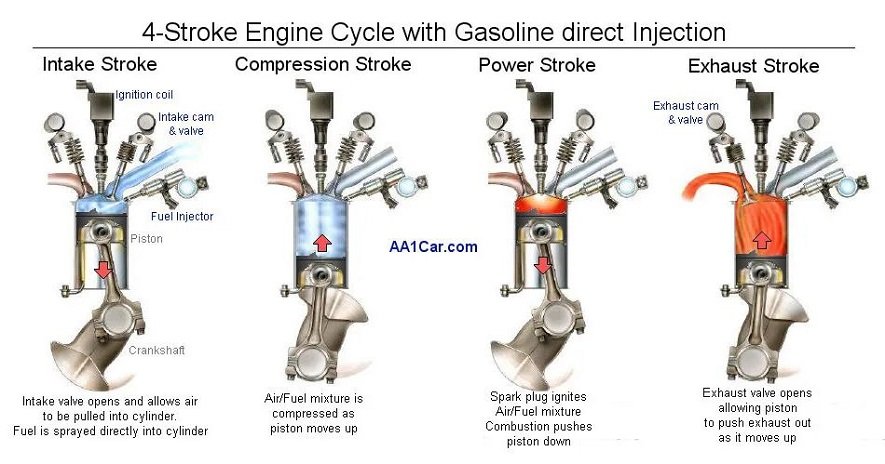Knock Knock? Engine Knock Explained
Knock is one of, if not the scariest, words we as Honda/Acura enthusiasts hear in conversation. You hear things like “my knock counts are too high” or “my knock control” is out of range.
But what exactly is knock? How does it work on your 10th or 11th Generation Civic? What causes it?
We have seen tons and tons of misinformation and worried souls on this topic across the internet so today we are going to drop some knowledge. We'll explain what knock is, what causes it, and most importantly how it works in your L15 or K20 series engine family.
KNOCK, what it is and what it is not?
Before we dig into the logic that your late model Civic, Accord, CRV, etc uses to measure knock, we first need to define the term.
“Engine Knock” or “Detonation” as it is referred to sometimes is the uncontrolled expansion of an air/fuel mixture that occurs after the main combustion event which in turn creates a “2nd” flame front inside your cylinder bore.
The keyword to note here is after because there is another means of an uncontrolled explosion that can occur before the main combustion and that is known as “pre-ignition”. Don’t get these two things confused. These two terms are often used interchangeably because they are closely related, but it is important to note that they are the result of two different events within the combustion chamber. Pre-ignition is another thing in itself and for the sake of simplifying this tech article, we are not going to talk about it. Just remember that “Knock” happens after the spark plug has already discharged. Another key phrase mentioned above is flame front.
The flame front is the leading edge/region of space where the actual combustion event takes place.
Note, we are calling the spark event “combustion” and not an “explosion” because the spark event, if done correctly is not an explosion at all but rather a smooth and controlled burn. This is also an important distinction to recognize when we are talking about engines and the combustion process. Everything that is happening within our cylinders is a nice and controlled process and not as violent and explosive as you might think.
Image courtesy of Bosch
In order for a gas engine to work properly, the right amount of air needs to mix with the right amount of fuel and be ignited by the spark plug at the exact right time to create our “controlled” combustion. If any of these 3 critical components are off, our engine can be down on power, run poorly or not at all, and in the worst case severely damage itself. The use of quality parts, good maintenance, and well-done engine tunes will ensure that our engine runs as intended.
The Combustion Process
To best understand a Knock scenario, we are going to describe two instances of an engine running correctly. For the first, no knock is present and for the second the engine knock is occurring. This is a simple explanation of the combustion process, to give context to knock and its understanding, but not a full explanation of all the aspects of the process as that can take another tech article within itself. These examples will be described in relation to the operation of your 2016+ Honda Civic equipped with direct injection and forced induction (turbocharger).
Image credit
Combustion Without Knock
During the intake stroke, as the piston is traveling down its bore, the engine is taking in intercooled and boosted air through the intake manifold. This air has a certain temperature and density to it which varies depending on various conditions. The values themselves do not matter in this example, just know that our objective is always to get the coldest and densest air into our engine in order to give us the most power potential.
Once the piston has reached the bottom of the cylinder bore it then begins to travel back up to begin the compression stroke. It is during this time that the fuel injector opens up and lets in a set amount of fuel as commanded by the PCM (ECU, tune, computer, etc). The exact timing and length of the injector opening are dictated by the engine map that considers given rpm, throttle position, and other factors.
As the piston travels up the cylinder bore the air and fuel begin to mix and prepare to be acted on by the spark plug. At some point, before the piston reaches TDC (top dead center) the spark plug discharges, sending a spark to ignite the mixture and start combustion. This ignition, in a rapid but in a controlled manner, creates a flame front that flows through the combustion chamber and ignites all of the air-fuel particles. This “controlled burn” leads to controlled rise of cylinder head pressure and that pressure does work on the top of our piston which eventually rotates our tires.
On most modern engines, the aim is to have max cylinder head pressure occur around 14-18 degrees after top dead center as this is the point in which our engine has the greatest ability to perform work. The cylinder head pressure at this time can be anywhere from 1000 to 2000 psi!
If our air/fuel mixture is correct and our ignition timing is maximized then there is one flame front that is completing combustion and in turn, giving us a safe and linear increase of cylinder head pressure that is well within the limits of what the engine can handle. Again, the important part is there is one complete and controlled burn happening and not an explosion.
Combustion With Knock
Now, let’s take a look at an example where knock is present in the engine. The process starts the exact same way with the intake stroke, compression stroke, and ignition event. The difference is what happens after our spark plug has gone off and has ignited the air/fuel mixture.
In a case where knock is present, a second combustion event takes place in the cylinder bore that was not initiated by the spark event. This unintentional combustion creates a second flame front. As the gasses in the cylinder expand, these two flame fronts collide in a violent and explosive manner which leads to a dramatic increase in cylinder head pressure.
This dramatic increase in cylinder head pressure creates a loud and audible metallic like noise you can often hear. That noise is knock. Your engine is equipped with a knock sensor. Think of it as a stethoscope for your engine.
Because there are two flame fronts colliding there is no longer a controlled burn and in this situation, the extreme cylinder head pressure generated is more than what the physical components of our engine are designed to handle.
Because of this extreme pressure and heat it’s possible, in a worst case scenario, to melt pistons, bend rods, and do some real damage. Luckily for us, most knock is detected by the sensor and the PCM adjusts to prevent damage from occurring. In most modern cars, the PCM will either add fuel, reduce timing, lower boost, or a combination of all three in order to get the knock to stop.
What Causes Knock
Now that we know what knock is, let's look into what causes it. Knock/detonation is the second, unplanned, combustion in our cylinder. We need to understand what is making that happen. In no particular order, some of the reasons for knock can be:
Too much ignition advance
Too high of intake air temperatures
Too low of an octane fuel being utilized
Too high of cylinder boost pressure for the given physical components
Too high of a compression ratio for the given application
This list does not include every possible scenario, but does mention the most likely reasons for engine knock.
Now that you know what Knock is and is not, we will pause here. Let us know if you want another blog on this topic where we detail how the knock sensor works and the logic behind it for a 2016+ Honda Civic and Acura Integra with 1.5T engines.
Stay tuned and till next time!
-Vincent





